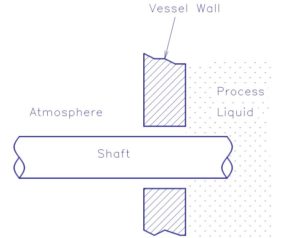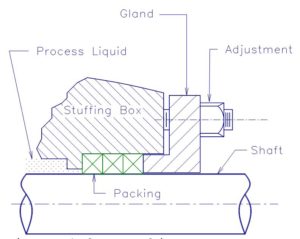The history of mechanical seals is relatively short in comparison to other mechanical devices. The first patents for mechanical seals began to appear in the early 1900’s. Before the invention of mechanical seals, packing was used for thousands of years to seal low speed rotating shafts.
In a relatively short period of time, the mechanical end face seal has found its way into almost every industry. In aerospace it is used to seal the propellant pumps. In the automobile it is used in the water pump to seal the coolant. In petrochemical plants it seals a variety of hazardous and non-hazardous liquids in pumps, mixers and reactors. In many homes it is used in the water well, washing machines and dishwashers. Mechanical end face seals have become a part of our everyday life.
In addition to mechanical end face seals, the word “seal” is used to describe a wide variety of sealing devices. For example, gaskets, O-rings and lip seals are frequently called “seals”. In order to distinguish between various sealing devices, it may be more proper to refer to a mechanical end face seal, but the shorter “mechanical seal” or, frequently, simply “seal” will be used.
In order to appreciate mechanical seals, we should first consider the fundamental problem of preventing leakage around a shaft that enters a vessel. Figure 1 shows this situation. The obvious way to reduce leakage is to minimize the radial clearance between the shaft and the vessel wall. Just as obviously, the shaft may rub the vessel wall if the clearance is too small. A distinguishing feature of Figure 1 is that the leakage is directed along the axis of the shaft.

Figure 2 shows an improved situation as compared to Figure 1; the vessel is modified so that a compressible material can be placed between the shaft and vessel. Because this material is “packed” between the shaft and vessel, it is called packing. The space between the shaft and vessel is called the stuffing box. Figure 2 illustrates the concept of compression packing in a stuffing box. In Figure 2, just as in Figure 1, the leakage path is along the axis of the shaft.

The use of compression packing can be traced back thousands of years to southwest Asia; the first packing was made of flax and tallow. Today, different materials are used but the basic concept has not changed. The stuffing box is completely filled with a resilient material which is formed into rings. These rings are mechanically compressed to reduce the leakage path.
Compression packing can be installed with a few simple tools. It is generally considered to be the lowest cost arrangement for control of leakage that is available to the industrial user today. With packing, liquid enters the stuffing box area under hydraulic pressure. This liquid flows under the rings of packing and eventually leaks out at the packing gland. If less leakage is desirable, the mechanic simply tightens the packing gland. A certain amount of visible leakage is always required with packing. This leakage provides cooling and lubrication.
Packing wears and compensation must be made for this loss of material. As wear occurs, the packing gland is tightened. This adjustment must be made frequently and is truly arbitrary. Many packing failures are caused by overheating and rapid wear as a result of overtightening the packing gland.
Under similar conditions, the leakage from a mechanical seal will be several orders of magnitude less than leakage from packing.
